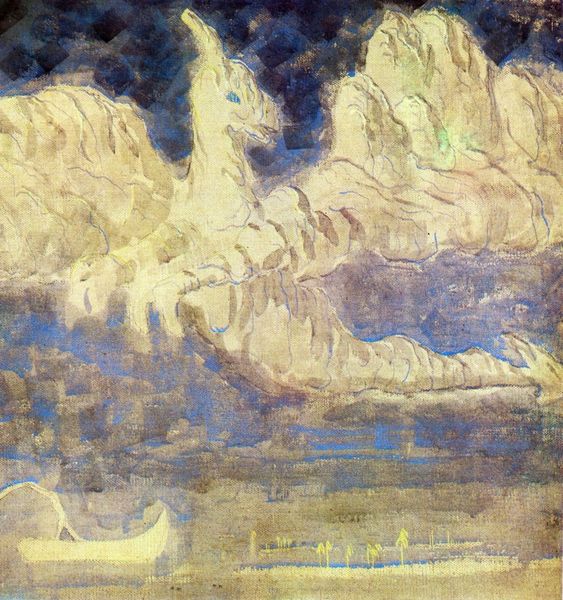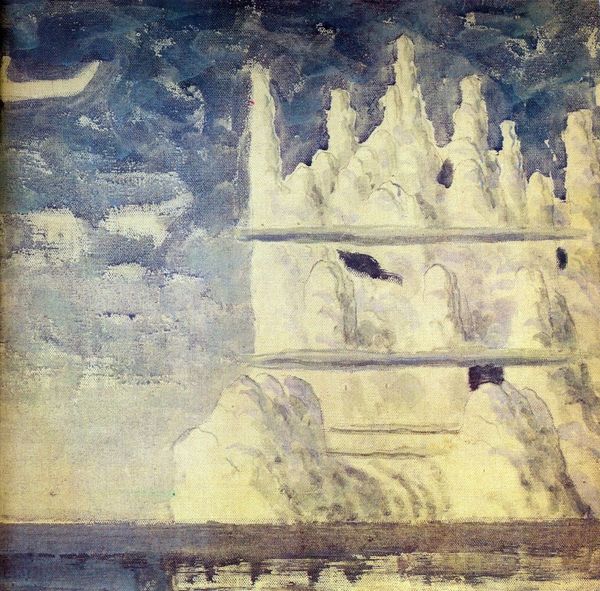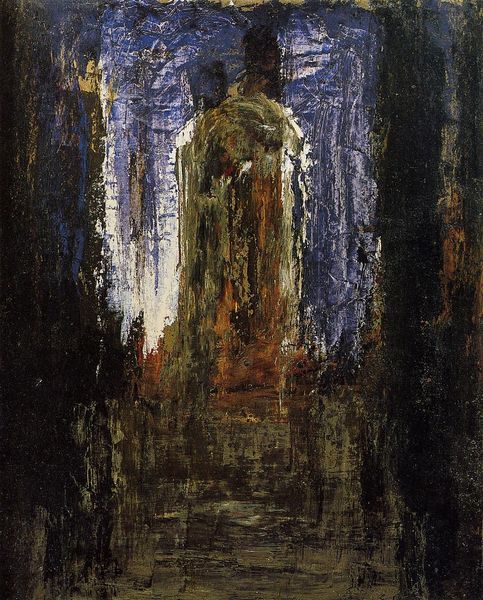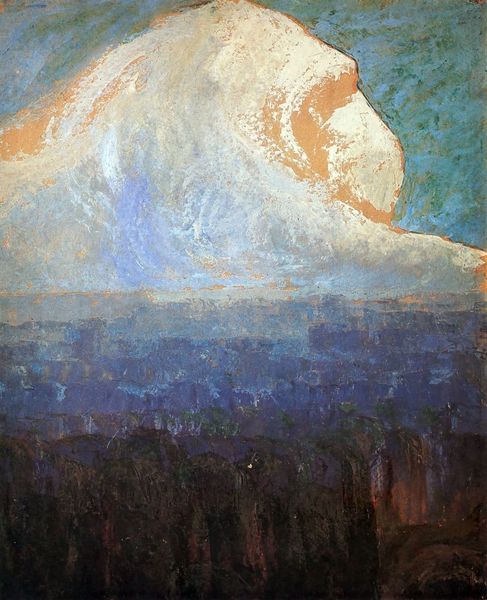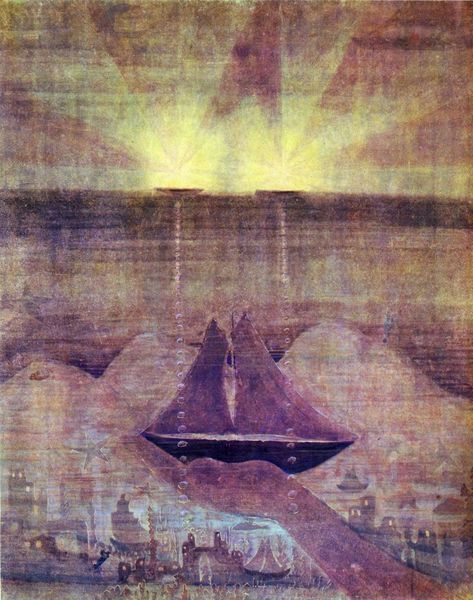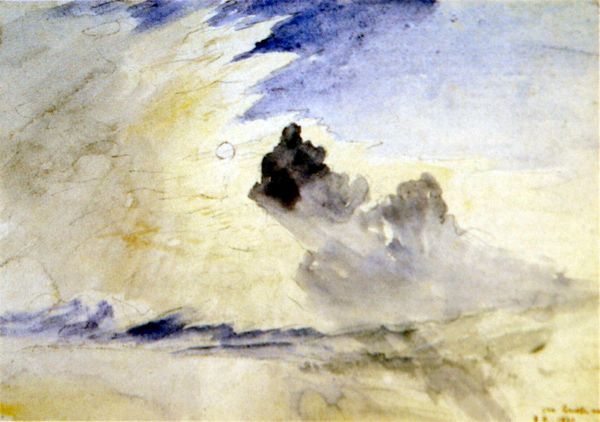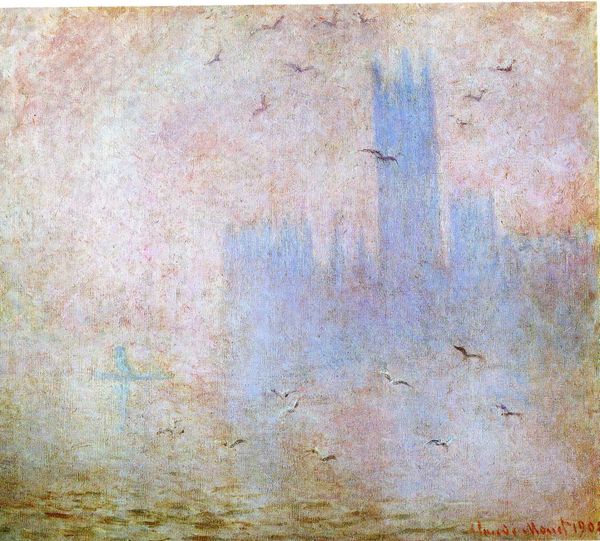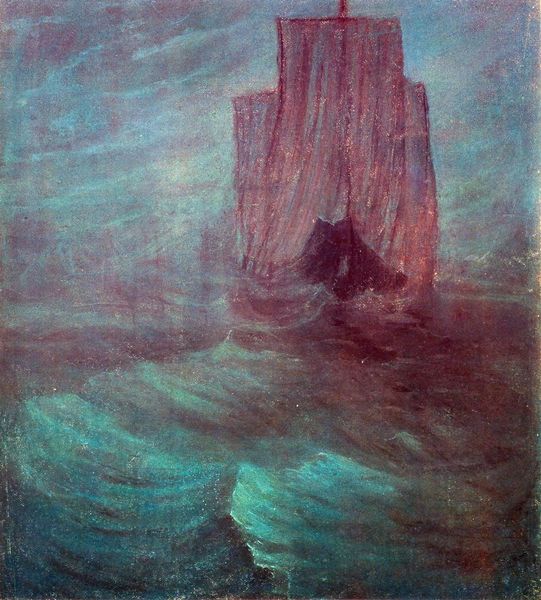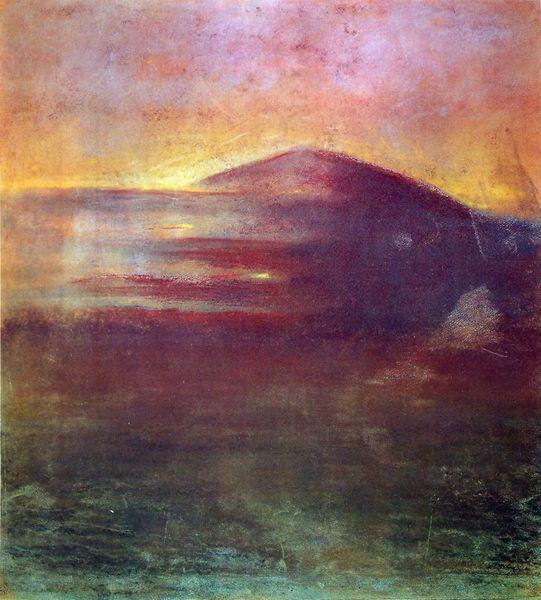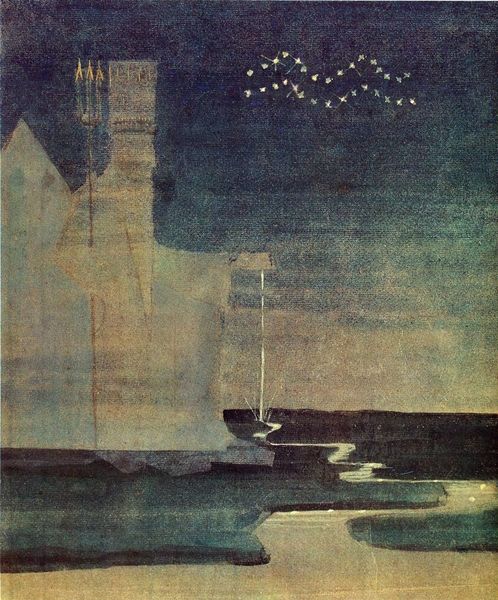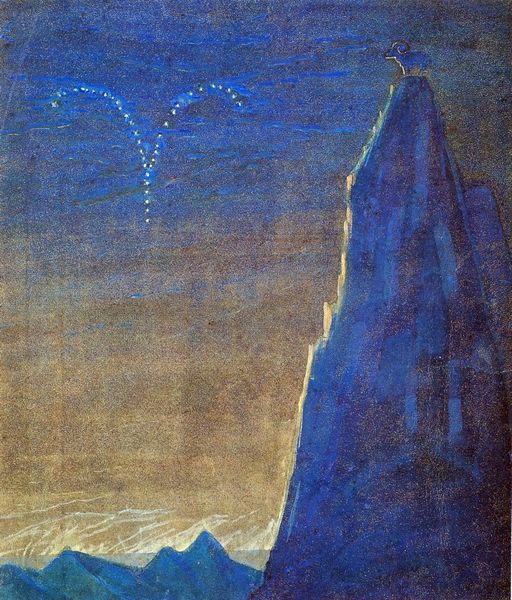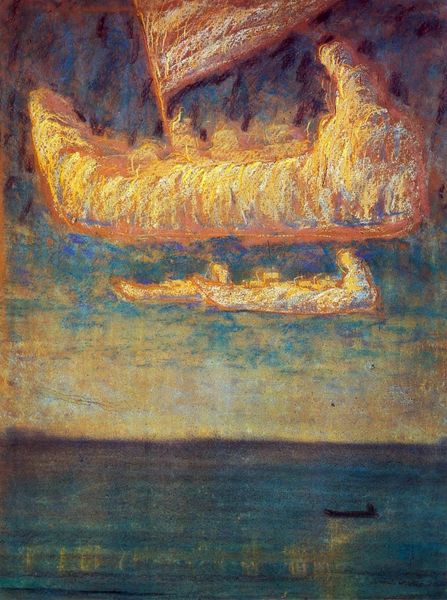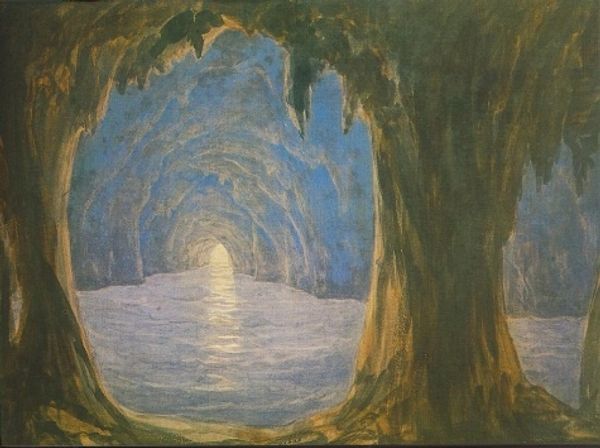
painting, watercolor
#
art-nouveau
#
water colours
#
painting
#
landscape
#
watercolor
#
geometric
#
abstraction
#
symbolism
Copyright: Public domain
Curator: What a fascinating image. This watercolor is "Journey of the Prince (I)," created in 1907 by Mikalojus Konstantinas Ciurlionis. He was a Lithuanian artist who combined Symbolism with elements of Art Nouveau. Editor: My first impression is of something spectral and dreamlike. It’s almost like looking at figures through mist. The light is diffuse, the forms soft… are they figures or landmasses? It's so ambiguous and strangely ethereal. Curator: That sense of ethereality is very much intended. Ciurlionis was deeply interested in theosophy and spiritualism. We see how abstract geometry merges into what could be landscape forms or figures that could embody spiritual beings. This merging was an element of his social and political thought at the time; to suggest all existence in unison. Editor: The image really strikes me with how effectively he uses light and shadow to suggest spiritual weight, creating forms that only exist on the edge of visibility. Like the barest glimmer of collective cultural memories barely bubbling at the surface of our present awareness. Curator: That’s a great way to put it. He uses these watercolor techniques, yes, but he’s also interested in how to use visual arts to explore something close to musical composition – note the journey implied in the title. At this moment, many symbolist painters embraced spiritual or occult themes, not as escapism, but to challenge dominant modes of seeing the world at a historical moment in rapid transformation, including technological changes that changed people's perceptions. Editor: It reminds us of how visual language can encode narratives and how recurring visual themes like journeys and the motif of rising figures continue to have cultural impacts through ages. What’s so potent here is how little he gives us concretely and relies so much on the evocative quality of these universal symbols. Curator: And in that very lack of the concrete, Ciurlionis really encourages a democratization of art's interpretation. How we consider the place of change, journeys, spirit, not fixed forms of seeing them but felt experiences. Editor: That’s fascinating – almost an open invitation for collective visual interpretations. This wasn’t just a journey for a prince, but a visual quest for the viewer. Curator: Indeed, one that reflects both our histories and personal symbolism.
Comments
No comments
Be the first to comment and join the conversation on the ultimate creative platform.
